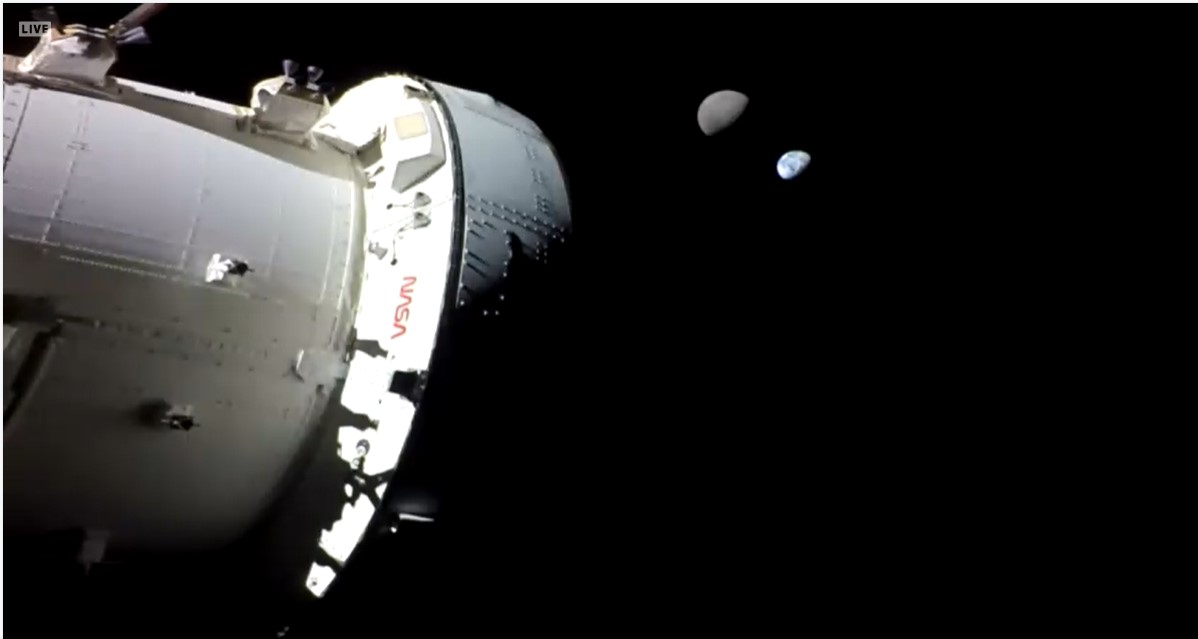

The Earth and Moon as see from the Orion spacecraft, close to 435,000 km (270,000 miles) from Earth. Credit: NASA livestream.
In case you missed any of the 25-day flight of Artemis 1, NASA has compiled a 25-minute highlight reel that showcases the top moments of the mission, from launch to splashdown.
The Space Launch System (SLS) rocket lifted off on November 16, 2022 from Kennedy Space Center in Florida, sending the Orion spacecraft out past the Moon, testing out the capsule in the harsh environment of deep space. This will prepare and ‘shake down’ both the spacecraft and the ground systems and teams before flying astronauts on Artemis II.
During the mission, Orion performed two lunar flybys, coming within 130 km (80 miles) of the lunar surface. At its farthest distance during the mission, Orion traveled nearly 435,000 km (270,000 miles) from Earth. In total during its 25.5-day circumlunar flight, the Orion spacecraft traveled more than 2.25 million km (1.4 million mi) and flew beyond the Moon’s orbit. Additionally, Orion stayed in space longer than any spacecraft designed for astronauts without docking to a space station.
With cameras mounted on the solar arrays of the European Service Module, the mission sent back some images that are sure to become iconic of the Artemis program, showing of our tiny fragile world along with the Moon in the foreground.
Orion came back to Earth on December 11. During re-entry, Orion endured temperatures of about 2,300 degrees Celsius (5,000 degrees Fahrenheit). Within about 20 minutes, Orion slowed from nearly 25,000 mph to about 20 mph for its parachute-assisted splashdown.
Artemis 2 will carry astronauts on approximately the same orbital path. That mission is currently set to launch in May of 2024, but like Artemis 1, it will likely see several delays that will push the launch to later that year.
The journey to Mars will subject astronauts to extended periods of exposure to radiation during…
Anthropogenic climate change is creating a vicious circle where rising temperatures are causing glaciers to…
Satellites often face a disappointing end: despite having fully working systems, they are often de-orbited…
Astronomers have known for some time that nearby supernovae have had a profound effect on…
How can we explore Saturn’s moon, Enceladus, to include its surface and subsurface ocean, with…
Have you ever wondered how astronomers manage to map out the Milky Way when it's…